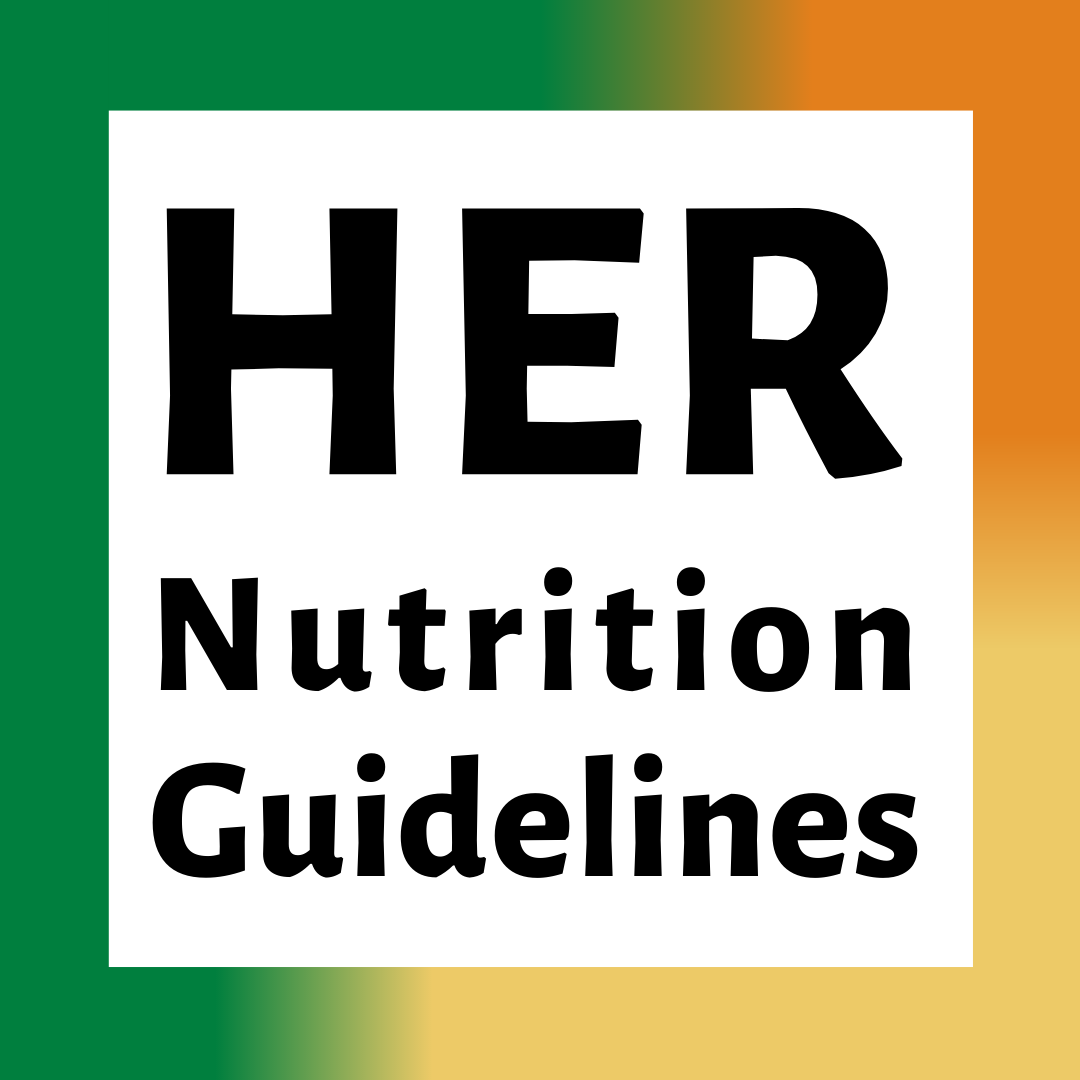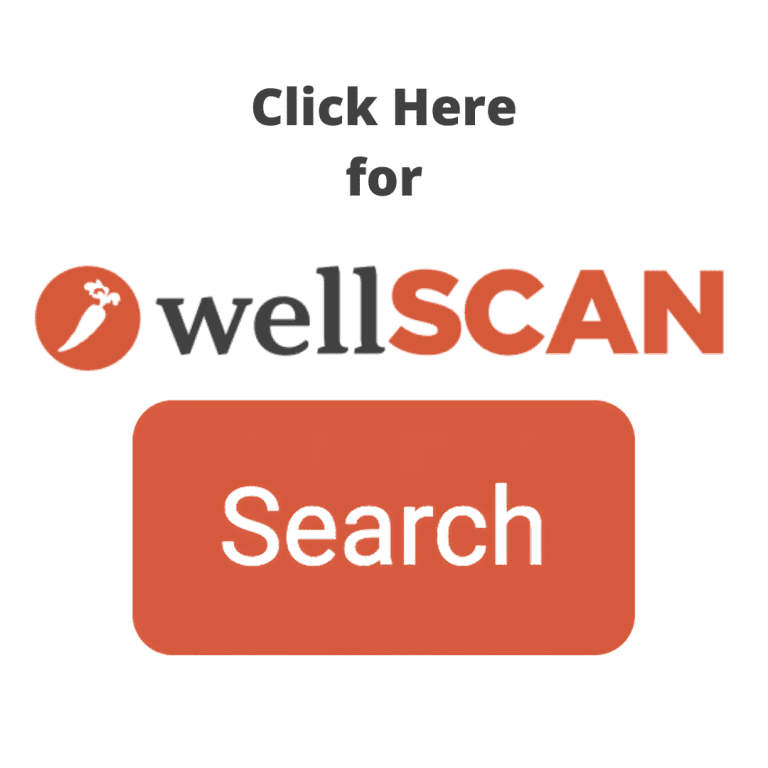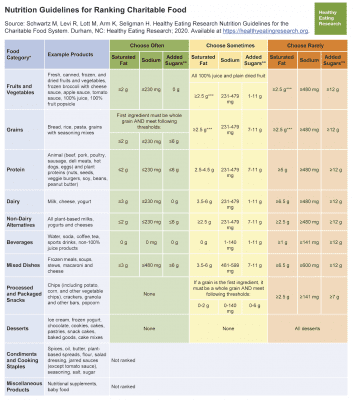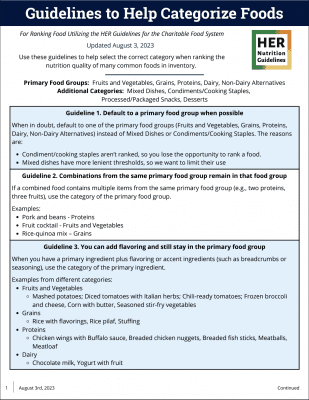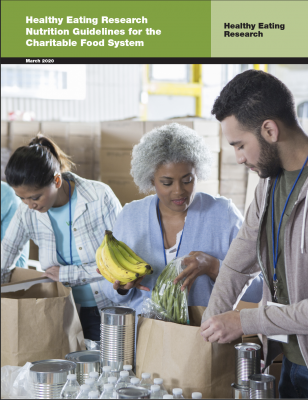Healthy Eating Research Nutrition Guidelines
Federal food programs like the Supplemental Nutrition Assistance Program (SNAP) and the Special Supplemental Nutrition Program for Women, Infants, and Children (WIC) are the first line of defense against food insecurity in the United States. However, these benefits are often not sufficient to meet all of the food needs of people living in food-insecure households. The charitable food system—a network of food banks, food pantries, and meal programs—fills this gap by distributing billions of pounds of food annually.
In 2019, Healthy Eating Research convened a panel of experts in the charitable food system, nutrition, and food policy fields to create clear, specific recommendations for evidence-based nutrition guidelines tailored to the unique needs and capacity of the charitable food system. The intent of these recommendations is to improve the quality of foods in food banks and pantries in order to increase access to and promote healthier food choices across the charitable food system, allowing all people in the United States—regardless of income—access to the foods necessary for an active, healthy life.
Dr. Marlene Schwartz - the Director of the Rudd Center - co-chaired this panel along with Hilary Seligman from the University of California, San Francisco. The full report with the panel's findings, "Healthy Eating Research Nutrition Guidelines for the Charitable Food System," was released in March 2020.
Resources
Understanding the Guidelines
Products are divided into 11 categories; and within categories, items are ranked into tiers of “choose often” (green columns), “choose sometimes” (yellow columns), and “choose rarely” (red columns) based on saturated fat, sodium, and added sugar nutrient thresholds. Product examples are provided for each of the 11 food categories to illustrate the types of items that would fall into each category. Additional details can be found in the full report.
The 11 categories of food are: Fruits and Vegetables, Grains, Protein, Dairy, Non-Dairy Alternatives, Beverages, Mixed Dishes, Processed and Packaged Snacks, Desserts, Condiments and Cooking Staples, and Miscellaneous Products.
The expert panel chose to focus primarily on these three nutrients to limit – saturated fat, sodium, and added sugar – based on evidence linking increased consumption to increased risk for diet-related chronic diseases, including obesity, diabetes, hypertension, and cardiovascular disease. The current thresholds for each are based on nutrients found in a single serving of food. Anchoring the guidelines to serving size allows straightforward identification of necessary information on the Nutrition Facts Label, and should make the system easier to implement.
One-Page Summary of Guidelines
Additionally, More than Food Consulting (in partnership with Feeding America), created two handouts to help partners understand and implement the HER Guidelines:
Working with Pantries
To improve communication of the nutrition ranking system to neighbors - either when launching these resources or when serving community members where there may be a language barrier - the Greater Chicago Food Depository developed SWAP Fact Sheets in 11 languages (English, Spanish, Chinese, Polish, Russian, Ukrainian, Arabic, Farsi, Dari, French, and Pashto). These single-sheet fliers provide a simple summary of what SWAP is, how rankings are assigned, why diet-related diseases are a concern, and what the Green, Yellow, and Red rankings mean. 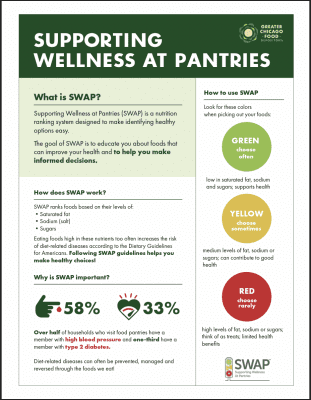
To supplement these fact sheets, their team developed short training videos for food bank staff, pantry staff and volunteers, which cover the community need for SWAP, how to rank foods, how to implement SWAP at pantries, and how to communicate SWAP rankings to neighbors. The videos are available in English and Spanish versions - with all on-screen text and voiceover narration translated - and can be downloaded or shared via Vimeo.
Video 1 – Introduction to SWAP
Video 2 – How to Rank Foods with SWAP
Video 3 – Pantry Implementation
Video 4 – SWAP Communication
Additionally, the More Than Food Consulting team partnered with Feeding America to develop resources about utilizing the HER Guidelines:
Key Research Studies
Validating a Nutrition Ranking System for Food Pantries Using the Healthy Eating Index-2015
- Authors: Maria Gombi-Vaca, Ran Xu, Marlene Schwartz, and Caitlin Caspi
- September 2022
- Two-Page Brief
Construct validity of the Charitable Food Nutrition Index
- Authors: Maria Gombi-Vaca, Ran Xu, Marlene Schwartz, and Caitlin Caspi
- November 2023
Nutrition standards for the charitable food system: challenges and opportunities
- Authors: Ronli Levi, Marlene Schwartz, Katie Martin, and Hilary Seligman
- March 2022
- Authors: Maria Gombi-Vaca and Marlene Schwartz
- February 2023
- One-Page Report of the Findings
Tools for Categorizing Foods in the Charitable Food System
How to Prepare Your Data for HER Analyses:
- This document provides step-by-step instructions for preparing your data for HER analyses using FANO categories.
- It also provides the default rank for foods when applicable.
Guidelines to Help Categorize Foods
- This document can be used to help select the correct category when ranking the nutrition quality of many common foods.
- These guidelines were created by the Item Card Workshop.
Questions about these tools should be directed to Marlene Schwartz (marlene.schwartz@uconn.edu).
